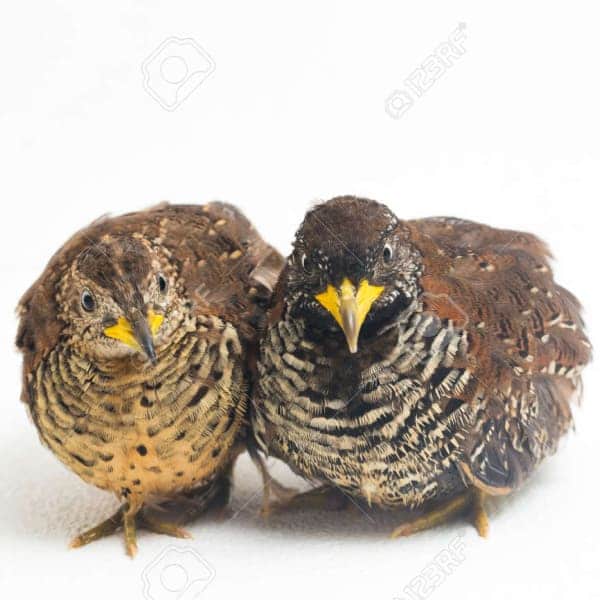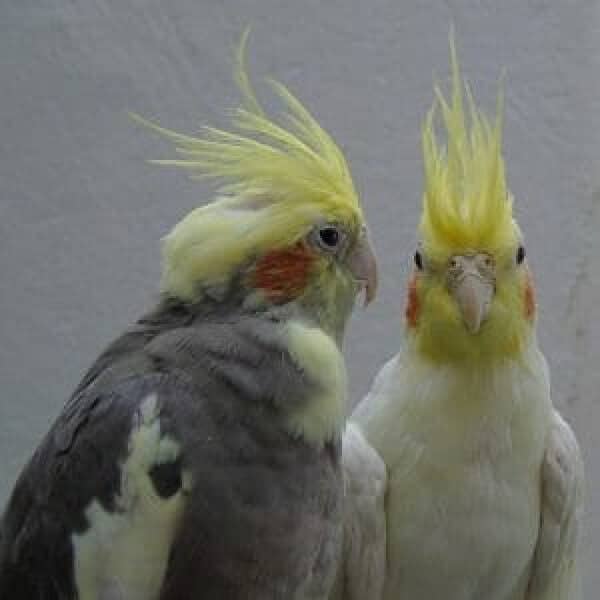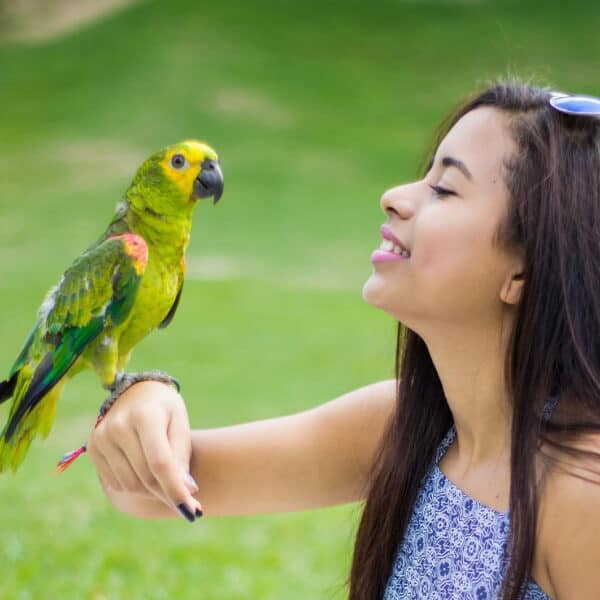Last Updated on by Mitch Rezman
Button Quails aka Chinese Painted Quails are an oft-overlooked aviary bird. They are classified as Galliformes which simply states, they’re ground-eating birds (like chickens, turkeys, peacocks, and pheasants). Button quails can fly but most of their time is on the ground and they even enjoy taking dust baths. They use the sand for grit as well which helps with digestion.
The State bird of California is a California Quail, the button Quail is about half the size and does not have had plume. Button Quails come in white, silver, reddish-brown, and even speckled colors.
Females usually have bright white faces and males have more distinct markings. In the wild, they can be found anywhere from India to northern Australia and about 15 species can be found in Africa.
Quails are quiet birds but the males can get a bit vocal. “Crowing” is a long high high-pitched sound they make as they mature. Male Quails are known to crow all night if they see any light.
Something you may want to think about if you want to get a Button Quail and keep them indoors. They are also prone to night frights when even minimally disturbed. They are nervous birds even in daylight so you want to move about them slowly.
Because they don’t perch, they need their own food and water on the floor of the cage where they can reach the dishes. They are quite happy to eat the pellets and seeds that fall on the floor from the other birds in the aviary.
They’re generally fed game bird crumbles but Canary seed & pellets along with mealworms and their own cuttlebone would be a fine diet. You can feed them about anything from hard-boiled eggs to mixed vegetables.
Because they are omnivores they really like live insects and if you keep your birds outside they will help in keeping the insect population down.
The floor of the cage should be solid, unlike a parrot cage where the floor grate is wire. Because males always want to breed they can be very aggressive and can chase females, pecking them mercilessly.
It’s best to have some potted plants or greenery in the cage for the females to hide behind ( artificial is okay). They do not use perches.
It’s best to give them about 3 feet of height in their birdcage because when startled they fly straight up but they poop out rather quickly and flutter back down. By giving them enough “headroom” you can avoid injuries like hurting themselves on the roof of the cage.
Females will lay eggs whether or not they’re with a male. They’ll generally lay an egg every day for several days then take a few days off. This egg-laying cycle continues year-round and as long as she’s getting enough nutrition she should be fine.
If you’re thinking of breeding you’re best off using an incubator because most of these birds have lost their nesting instincts. Because so many of these birds are in captivity it’s really better to not allow the eggs to develop unless you have an outlet for the babies.
You may consider actually eating their eggs. They taste just like chicken eggs (or so I’m told) but have a higher percentage of yolk. If you plan on doing this make sure that you pull the eggs within a day of laying and then rinse (cool water) pat dry and you’ll be good to go for up to three weeks.
Because they’re small it takes about 10 Button Quayle eggs to equal one large chicken egg in volume. You can scramble them or make a poundcake with them. If you really want to impress your friends you can hard-boil them and offer them up as and hors d’oeuvre at your next party.
Because the shells are not all that easy to remove it’s best to boil them for about 5 min. in salted water. The Martha Stewart in me recommends you put the peeled eggs together with some black olives for little contrast then expect everyone to say “ewww” after they’ve met the mom who laid them.
When it comes to bedding for your baby quail, it’s important to provide a surface that promotes good posture and prevents splayed legs. Avoid using sand as it can be messy and difficult to clean.
Instead, opt for a textured covering such as indoor/outdoor carpet. The carpet provides a suitable surface for the chicks to develop strong leg muscles and stand properly.
Unlike a smooth surface, which can be dangerous as the chicks’ legs continuously slip out from beneath them, the carpet ensures stability. This is crucial during the first few days of their lives, as even a few slips can lead to splayed legs and potentially doom the chicks.
The carpet can be easily washed, disinfected, and reused several times, making it a practical and hygienic choice for your baby quail’s bedding needs.
Written by Mitch Rezman
Approved by Catherine Tobsing
Approved by Catherine Tobsing
Author Profile
Latest entries
 The Traveling BirdJune 26, 2025Can You Name 5 Parrot Species That Are Living Wild in the USA?
The Traveling BirdJune 26, 2025Can You Name 5 Parrot Species That Are Living Wild in the USA? Bird BehaviorJune 26, 2025How is it Parrots Are Problem Solvers Social Animals and Even Use Tools?
Bird BehaviorJune 26, 2025How is it Parrots Are Problem Solvers Social Animals and Even Use Tools? Bird & Parrot AnatomyJune 25, 2025How a Tiny Chemical Modification Makes Parrots Nature’s Living Paintings
Bird & Parrot AnatomyJune 25, 2025How a Tiny Chemical Modification Makes Parrots Nature’s Living Paintings PigeonsJune 20, 2025How Do Parrots Thrive in Cities Outside Their Native Habitats?
PigeonsJune 20, 2025How Do Parrots Thrive in Cities Outside Their Native Habitats?





Karen Ann Andrasi
26 Feb 2023I had been purchasing different sized ladders (colorful not just plain, unpainted wood) & also was receiving your E-mails. Then suddenly the E-mails stopped coming(?). I don’t know why, but recently the E-mails have re-started. I do enjoy them. I still have ONE lone male cockatiel who is now ABOUT “34-years” old* He sleeps lots & still comes out of his cage. But falls to the ground if he attempts to fly. He walks backward & his tail feathers keep breaking off, I’ve moved up to 3-different Amazon species & 1-Blue Headed female Pionus. She has her own cage & mostly stays in the kitchen with the 1 cockatiel. The Amazons=1-Yellow-Nape female, 1-Red-Lored female & 1-Blue-Front male Amazon. The Yellow-Nape often tries to visit the Blue-Front’s cage, as he shows off his mating behaviors! I really don’t want them to mate & remove the Yellow-Nape as soon as I realize she’s trying to visit “BLUE.” Both females each have their own cages & “BLUE” has his own cage for night sleeping* It’s nice to se you’re back as before! KAA